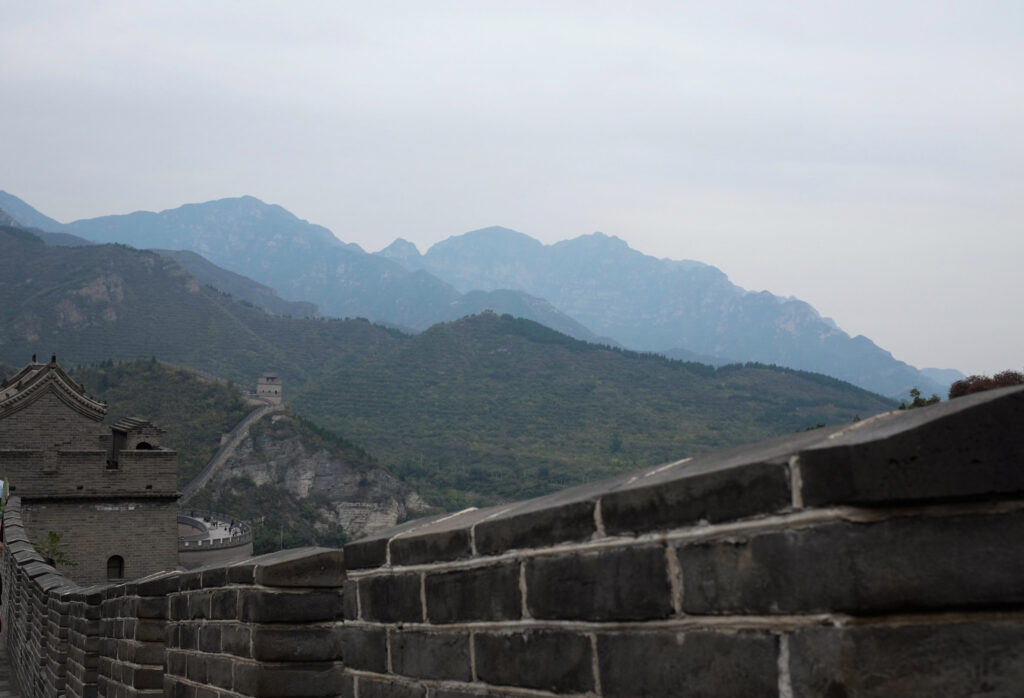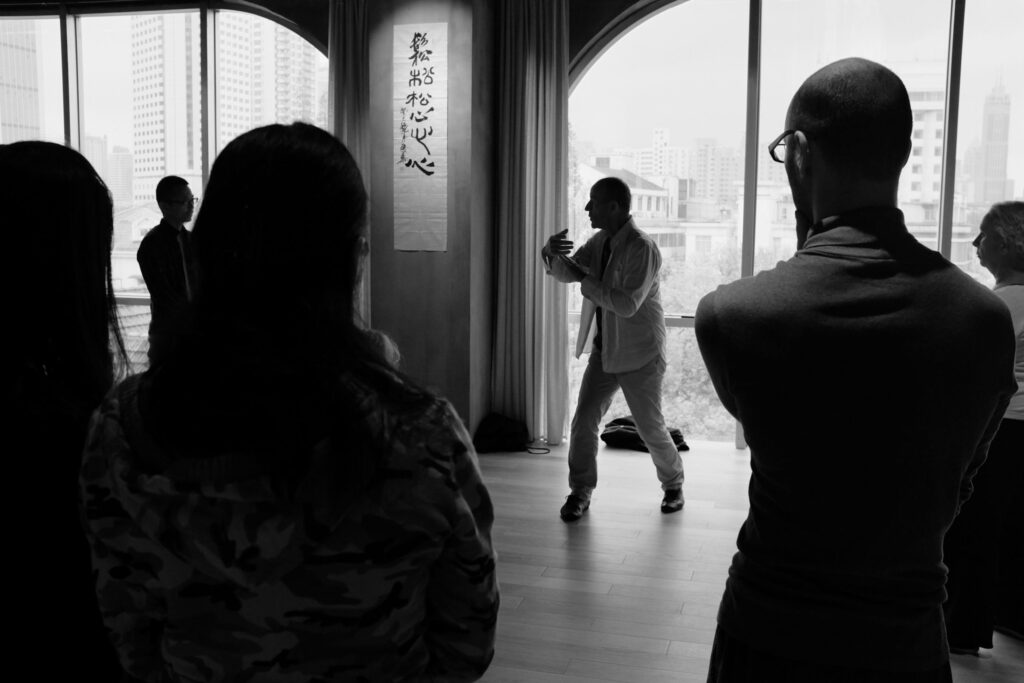
היסודות ההיסטוריים של אמנות הטאי צ’י, אמנות לחימה סינית עתיקה, לוטים בערפל. על פי המסורת האומנות נוצרה בידי אדם בשם זנג סאן פנג כנראה במאה ה13 כשהיא מבוססת על עקרונות הדאואיזם ועל מסורות לחימה קודמות.
מסופר שהמייסד זנג צפה בקרב בין נחש לעיט ובהשראתו יצר את הטאי צ’י . במהלך הדורות הועבר ידע ממורה מסור לתלמיד נאמן כשהאמנות ממשיכה להתפתח.
יאנג לו צ’אן
הפך את אומנות הטאי צ’י למפורסמת בחצר הקיסר ובסין כולה, אז זכתה אמנות לחימה סינית אלמונית עד אז בשמה: טאי צ’י צ’ואן. יאנג שהתפרסם בזכות יכולתו יוצאת הדופן אותה הפגין במהלך שנים רבות והזדמנויות רבות כונה בסין “יאנג הבלתי מנוצח”, לימד את המשפחה המלכותית, שומרי הראש הקיסריים ומספר רב של תלמידים אמנות לחימה, מהם התפתחו מרבית הזרמים המודרניים של האומנות. בדור השלישי במשפחת יאנג, יאנג צ’אנג פו פיתח את הסידרה הארוכה, פירסם לראשונה ספרים לקהל הרחב והפך את הטאי צ’י לזמין עבור חוגים רחבים בתחילת המאה ה20
פרופסור צ’אנג מאן צ’ינג
אדם יוצא דופן בכישוריו צייר, קליגרף, משורר ורופא למד מיאנג צ’אנג פו ולימד לאחר המהפיכה הקומוניסטית טאי צ’י בעיקר בטיוואן. בשנותיו המאוחרות הפיץ רב אמן צ’אנג מאן צ’ינג את הטאי צ’י בניו יורק בארצות הברית ומשם מדינות העולם השונות.
הואנג שינג-שיאנג
יליד פוג’יאן למד מגיל צעיר קונג פו עגור לבן והתפרסם כאלוף פוגי’אן. לאחר מלחמת העולם השניה תקופה בה נלחם כמפקד בכיר בצבא הסיני הלאומי, עבר הואנג לטאיוון ולמד טאי צ’י מפרופסור צ’אנג מאן-צ’ינג. בעקבות בקשת מורו עבר הואנג מטאיוון לסינגפור ואחר כך למלזיה, הפיץ את הטאי צ’י בקהילות הסיניות של דרום מזרח אסיה. בשיאה רשת בתי הספר שלימד רב-אמן הואנג מנתה אלפי תלמידים פעילים. הואנג הוסיף את הסידרה המהירה מסגנון לוהאן צ’ואן ועגור לבן דרומי ללימודי הטאי צ’י ולימד את הסידרות שיצרו פרופסור צ’אנג מאן ג’ינג ויאנג צ’אנג פו.
3 types of Taiji by Patrick A Kelly
There is genuine traditional Taiji, ‘healing’ Taiji or ‘gymnastic’ Taiji.
In traditional Taiji students progress through a long serious training, which produces true inner evolution, a deep well being and some ability at self-defense based on sensitivity and internal power rather than external strength and speed. The sublime experience of the past great practitioners is passed down, which requires effort from both students and teachers. The teachers have themselves been through such long training previously, with their own genuine teachers.
Secondly there is “healing” Taiji where people practice lightly to feel outwardly better and recover from the pressure of work and daily life. Like modern ‘Yoga”, there is some external value in this but it does not lead to internal refinement.
Thirdly you may also see “gymnastic” Taiji where all esoteric training is scorned and either beautiful “wushu” postures, or rough fighting movements are trained, perhaps with silk uniforms, sometimes for competition. This Taiji was officially promoted over the last 60-70 years but perhaps has lost the refined subtlety of the original art.
These last 2 methods are typically taught merely as a means of making a living. The lightly trained instructors, easily create new movements and systems which propogate their own simple ideas. These methods may increase attachment to and identification with the body (consolidating the ego). This is a long way from the great purpose of the deep and subtle art of true Taiji.
I suggest you think twice before investing your time in these last 2 – ask yourself what is really important in your life, then stay true to that and make your choice.

https://patrickkellytaiji.com/taiji/taijitransmission.html


